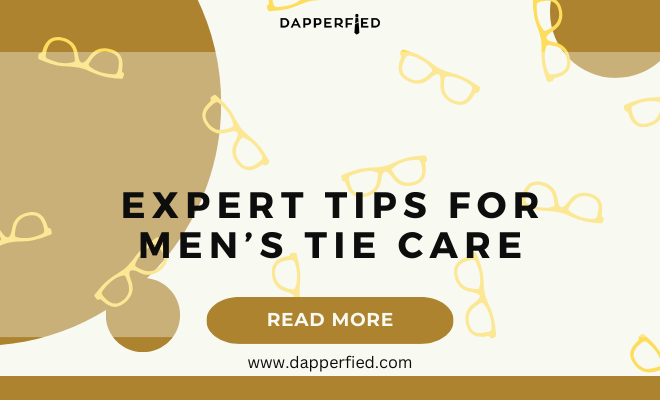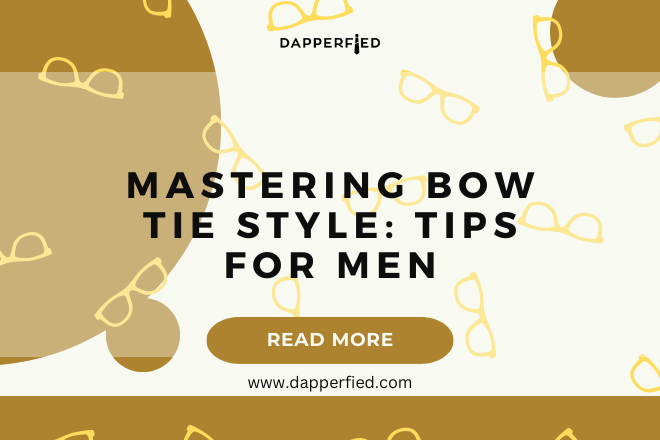
Men's Style
Expert Tips for Men’s Tie Care
Ties come in a variety of styles and materials, each with its own unique characteristics and care requirements. The most common types of ties include silk, polyester, wool, and cotton. Silk ties are luxurious and delicate, requiring gentle care to maintain their luster and shape. Polyester ties are more durable and easier to care for, making them a popular choice for everyday wear. Wool ties are warm and textured, often requiring specialized cleaning methods to preserve their appearance. Cotton ties are lightweight and breathable, making them a great choice for casual or summer wear.
In addition to material, ties also come in different styles such as standard, skinny, bow, and knit ties. Standard ties are the most common and versatile, suitable for both formal and casual occasions. Skinny ties are a modern and trendy option, best paired with slim-fit suits and shirts. Bow ties are a classic choice for formal events and can be made from a variety of materials. Knit ties have a more casual and textured appearance, often made from wool or silk. Understanding the different types of ties and their unique characteristics is essential for proper care and maintenance.
Ties can also feature various patterns and designs, such as stripes, polka dots, paisley, floral, and geometric prints. Each pattern requires specific care to preserve its appearance and prevent damage. Striped ties should be hung to prevent stretching, while polka dot ties may require gentle spot cleaning to maintain their vibrant colors. Paisley, floral, and geometric print ties often require delicate handling to avoid snagging or pulling the fabric. By understanding the different types of ties, materials, styles, and patterns, you can ensure that each tie receives the proper care it needs to look its best.
Key Takeaways
- There are different types of ties, including neckties, bow ties, and ascots, each with their own unique style and purpose.
- Proper storage and organization of ties is important to prevent wrinkles and damage, such as using tie racks or hangers to keep them neat and tidy.
- Regular cleaning and maintenance of ties, such as spot cleaning and airing them out, can help prolong their lifespan and keep them looking fresh.
- Knowing how to remove stains from ties, such as using gentle spot treatments and avoiding harsh chemicals, can help preserve their appearance.
- Ironing and steaming ties can help remove wrinkles and creases, but it’s important to use low heat and avoid direct contact with the fabric to prevent damage.
Proper Storage and Organization
Proper storage and organization are essential for maintaining the quality and appearance of your tie collection. Storing ties incorrectly can lead to wrinkles, creases, and damage to the fabric. The best way to store ties is by hanging them on a tie rack or hanger. This allows the ties to hang freely without becoming wrinkled or distorted. If you don’t have a tie rack, you can also roll your ties and place them in a drawer or storage box. Be sure to avoid folding or cramming your ties into tight spaces, as this can cause permanent creases and wrinkles.
When organizing your tie collection, consider arranging them by color or pattern for easy access. This will help you quickly find the perfect tie to complement your outfit without rummaging through a jumbled mess. You can also use dividers or compartments to keep your ties neatly separated and prevent them from becoming tangled or damaged. Another important aspect of proper tie storage is to avoid exposing them to direct sunlight or extreme temperatures, as this can cause fading and deterioration of the fabric.
It’s also important to regularly rotate your tie collection to prevent any one tie from becoming overused or worn out. By properly storing and organizing your ties, you can extend their lifespan and keep them looking sharp for years to come.
Cleaning and Maintenance
Proper cleaning and maintenance are crucial for preserving the appearance and longevity of your ties. The cleaning method you choose will depend on the material of the tie. For silk ties, it’s best to spot clean any stains with a gentle detergent and water solution. Avoid rubbing the fabric too vigorously, as this can cause damage. For more stubborn stains, consider taking your silk tie to a professional cleaner who specializes in delicate fabrics.
Polyester ties are more durable and can often be hand washed with mild soap and water. Be sure to gently squeeze out any excess water and lay the tie flat to dry to prevent distortion. Wool ties should be dry cleaned to avoid shrinking or damaging the fabric. Cotton ties can typically be machine washed on a gentle cycle, but be sure to check the care label for specific instructions.
In addition to cleaning, regular maintenance is important for keeping your ties in top condition. After wearing a tie, be sure to untie it carefully to avoid stretching or distorting the fabric. Hang your ties on a rack or hanger after each use to allow them to air out and maintain their shape. By following proper cleaning and maintenance practices, you can keep your ties looking fresh and stylish for years to come.
Removing Stains
| Stain Type | Removal Method | Effectiveness |
|---|---|---|
| Red Wine | White Vinegar and Baking Soda | High |
| Grease/Oil | Dish Soap and Hot Water | Medium |
| Grass | Hydrogen Peroxide | High |
| Blood | Cold Water and Salt | High |
Stains are an inevitable part of wearing ties, but with the right techniques, you can effectively remove them without causing damage to the fabric. The key to removing stains from ties is to act quickly and use gentle methods to avoid further discoloration or damage. For silk ties, it’s best to use a clean cloth dampened with cold water to blot the stain gently. Avoid rubbing the fabric, as this can spread the stain or cause damage. If the stain persists, consider taking your silk tie to a professional cleaner who specializes in delicate fabrics.
For polyester ties, you can use a mild soap and water solution to gently dab at the stain. Be sure to avoid using harsh chemicals or scrubbing too vigorously, as this can cause damage to the fabric. Wool ties should be taken to a professional cleaner for stain removal to avoid damaging the delicate fibers. Cotton ties can often be treated with a stain remover or gentle detergent, but be sure to test it on a small, inconspicuous area first to ensure it won’t cause further damage.
It’s important to remember that prevention is key when it comes to stains on ties. Be mindful of food and drink while wearing a tie, and consider using a stain-resistant spray for added protection. By promptly addressing stains with gentle cleaning methods, you can keep your ties looking fresh and stain-free.
Ironing and Steaming
Ironing and steaming are essential for maintaining the crisp appearance of your ties. However, it’s important to use caution when applying heat to delicate fabrics such as silk and wool. For silk ties, it’s best to use a low-heat setting on your iron or steamer and place a thin cloth between the iron and the tie to prevent direct contact with the fabric. Gently press the iron over the cloth in smooth motions to remove any wrinkles or creases.
Polyester ties can withstand higher heat levels but should still be ironed with caution to avoid melting or damage. Use a low-heat setting on your iron or steamer and test it on a small area of the tie first to ensure it won’t cause any harm. Wool ties should be steamed rather than ironed to avoid flattening the texture of the fabric. Use a handheld steamer on a low setting and hold it several inches away from the tie while gently gliding it over the surface.
Cotton ties can be ironed on a medium heat setting with steam to remove wrinkles and creases. Be sure to use a pressing cloth between the iron and the tie to protect the fabric from direct heat. By using proper ironing and steaming techniques, you can keep your ties looking sharp and well-groomed.

Knowing When to Retire a Tie

Knowing when to retire a tie is an important aspect of tie care that is often overlooked. Over time, ties can become worn out, faded, or damaged from regular wear and tear. It’s important to regularly inspect your tie collection for signs of aging or damage that may indicate it’s time for retirement.
Frayed edges, visible stains that cannot be removed, permanent creases or wrinkles, and faded colors are all signs that a tie has reached the end of its lifespan. Additionally, if a tie no longer complements your style or has become outdated, it may be time to retire it from your collection.
When retiring a tie, consider donating it if it’s still in good condition or repurposing it into other items such as pocket squares or accessories. By knowing when to retire a tie, you can keep your collection fresh and well-maintained.
Professional Tie Care Services
For those who want to ensure their ties receive the highest level of care, professional tie care services are an excellent option. These services specialize in cleaning, repairing, and preserving ties using specialized techniques that are gentle on delicate fabrics.
Professional cleaners have the expertise and equipment needed to remove stubborn stains without causing damage to the fabric. They also have the ability to press or steam ties using professional-grade equipment that ensures a crisp appearance without risking damage.
In addition to cleaning services, some professionals offer tie repair services for minor tears or snags that may occur over time. This can help extend the lifespan of your favorite ties and keep them looking their best.
If you have a valuable or sentimental tie that requires special care, professional tie care services can provide the expertise needed to preserve its appearance for years to come.
In conclusion, understanding different types of ties is essential for proper care and maintenance. By knowing how to store, clean, remove stains, iron/steam, retire when necessary, and utilize professional services when needed, you can ensure that your tie collection remains in top condition for years to come.
If you’re looking to elevate your winter style, check out this article on winter style for men for some great tips and inspiration. And don’t forget to pair your stylish winter outfit with a well-maintained tie using our Men’s Tie Care Tips!

FAQs
What are some general tips for caring for men’s ties?
Some general tips for caring for men’s ties include storing them properly, avoiding stains, and cleaning them carefully when necessary.
How should men’s ties be stored to maintain their shape?
Men’s ties should be hung or rolled to maintain their shape. Hanging them on a tie rack or rolling them and storing them in a tie case are both good options.
What are some common stains to avoid when wearing a tie?
Common stains to avoid when wearing a tie include food and drink stains, as well as oil-based stains from things like lotion or cologne.
How should men’s ties be cleaned when they become dirty?
Men’s ties should be spot cleaned with a gentle stain remover or taken to a professional dry cleaner for more thorough cleaning when necessary.
Are there any specific materials or fabrics that require special care when it comes to ties?
Silk ties require extra care and should be handled delicately to avoid damage. Other materials like wool or cotton may have specific care instructions as well.
















